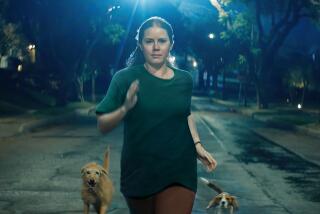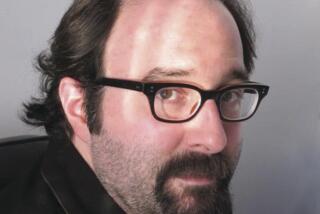The seven biggest movie stories of 2013
Gravity’s rainbow. A movie that so convincingly re-created outer space that it looked like it was shot there. Alfonso Cuaron had to wait years so the technology would catch up to his vision. When it did, he was able to make a movie, “Gravity,” that changed how we experienced the cosmos — and, perhaps, movies themselves. Like James Cameron did with “Avatar,” Cuaron has showed what is possible with multiple cameras and cutting-edge technology. Now the question is” Will his techniques soon become commonplace so that many more movies look and feel like “Gravity”? Cuaron isn’t so sure. “I’m sure a lot of what we experimented with can be applied in different ways,” he told Movies Now earlier this month. “But all these things are tools. They’re relevant only in terms of the emotional and thematic aspects.”
The summer swoon. Big-budget action films, often with big-name stars, have been a staple of the summer moviegoing season — and studio earnings reports — for well over a decade. But this summer that staple was knocked off its horse as “The Lone Ranger” and many of its sidekicks all went down (including “After Earth,” “R.I.P.D.” and plenty of others). One after another, these films took a tumble, causing studios to re-evaluate how they make movies and who they make movies with. This was perhaps the biggest story of 2013, and the one whose reverberations will be felt for years to come.
GRAPHIC: Best of 2013 | Entertainment & culture
B-movie bumps. While many of those huge summer tent poles were going down, mid-budget comedies and genre movies were ascendant, often outgrossing their better-funded competitors. “The Conjuring,” “The Heat” and “Despicable Me 2” all became monster hits, as the right packaging and concept made movies both more cost-effective and popular.
New black cinema. It’s hardly a stretch to say that major movies featuring black actors and/or touching on themes of race have been less common than they should be in recent years. But in 2013 that began to turn around. Films such as “Lee Daniels’ The Butler,” Brian Helgeland’s Jackie Robinson biopic “42” and Steve McQueen’s brutal, beautiful “12 Years A Slave” all not only hit theaters but did big business and became part of the conversation to boot. Expect more attention for them and others like them (e.g., Ryan Coogler’s Oscar Grant tale “Fruitvale Station,” which became a Sundance sensation) as awards season rolls on. Also expect a greater willingness for Hollywood to make these movies in the future. Here’s hoping, anyway.
Untimely deaths. Nearly every year sees the deaths of veteran actors who brought us joy on screens big and small. But, in 2013, the passing of younger personalities such as James Gandfolini and Paul Walker, each very much still vital, were particular tragedies, and highlighted how movie stars could be taken at the moment they were still doing what made us love them best. They also showed how their legacy can continue through their work, as Gandolfini did with his posthumously released “Enough Said” and Walker will with the upcoming “Fast & Furious 7,” which after some deliberation will feature scenes the late actor shot before he died. Gandolfini’s presence will also continue to be felt in 2014 as the last movie he shot, “Animal Rescue,” hits theaters.
PHOTOS: Box office top 10 of 2013
World War Zoom. It was one of the most famously troubled productions in recent memory — after all, it’s not every film that writes an entire new third act after one has already been shot, let alone stars one of the biggest celebrities on the planet. But in garnering $540 million worldwide and becoming the seventh-highest grossing movie of the American summer, Brad Pitt’s zombie tale “World War Z” disproved the “Heaven’s Gate” theory. Problems on-set and in development often don’t bode well, but about-faces can help. And while addressing problems head-on may mean more bad press, it also can mean a better movie and heartier box office.
Don’t call it a comeback. Terms like “Strongest year for cinema in decades,” thrown around by posts and postmortem roundups like this, tend to create more heat than light. Still, it was hard to argue against the idea that 2013 was a banner year for film, with ambitious pieces such as “12 Years a Slave,” “Her,”“Gravity,” “Nebraska” and “All Is Lost” all hitting within just a few months of one another — and showing that, for all of the great drama on the small screen, when cinema works, it can work better.
ALSO:
Five days of ‘Her’: Editing Samantha
A look behind the Shia LaBeouf controversy
Alfonso Cuaron: I’m ‘incapable’ of a faster pace
Follow me on Twitter at https://twitter.com/ZeitchikLAT
More to Read
Only good movies
Get the Indie Focus newsletter, Mark Olsen's weekly guide to the world of cinema.
You may occasionally receive promotional content from the Los Angeles Times.











